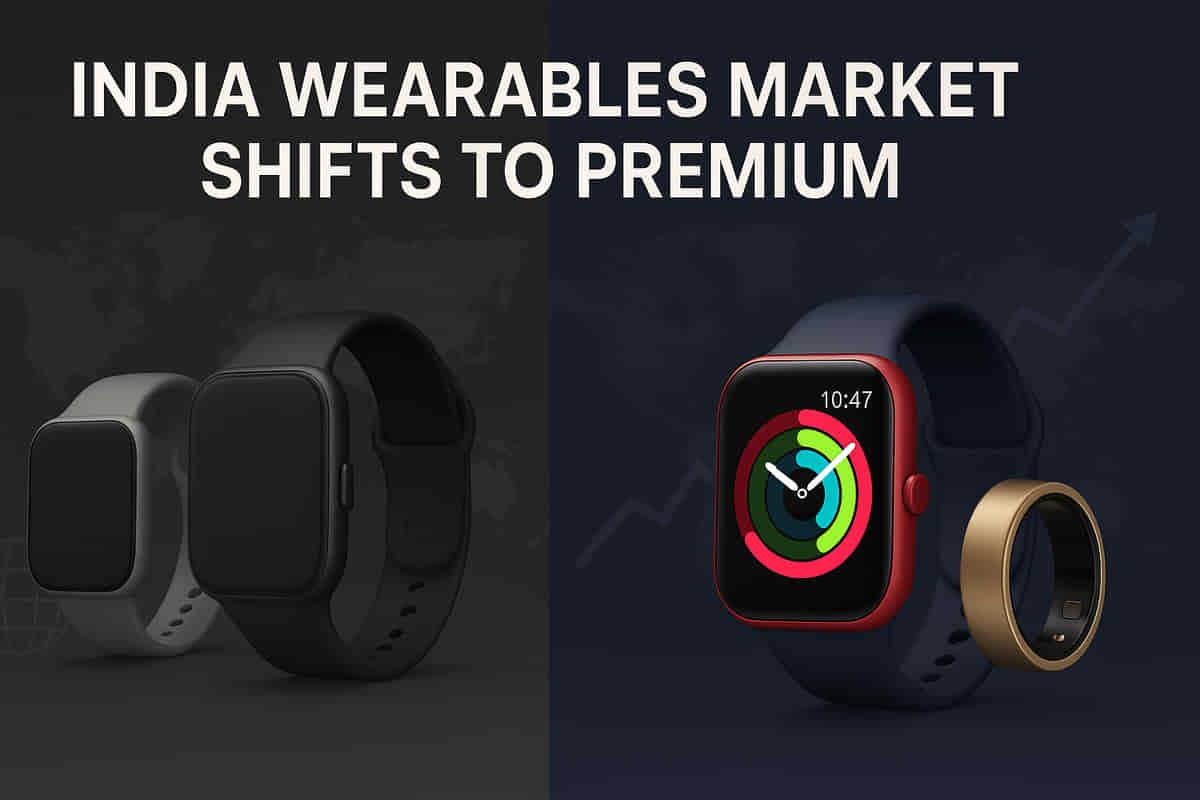India's Entry-Level Wearables Market Cools, Companies Pivot to Premium Products and Global Expansion
Consumer Products
|
30th October 2025, 9:35 AM

▶
Short Description :
Detailed Coverage :
India's wearables market experienced a significant downturn, with an 11.3% year-on-year decline in 2024, marking the category's first annual contraction. This slowdown is primarily attributed to saturation in the entry-level segment, coupled with a lack of meaningful innovation and extended replacement cycles, as consumers tend to hold onto smartwatches for longer periods. Companies like GoBoult are actively pursuing premiumization by launching higher-priced product series and forging strategic partnerships with brands like Ford and Dolby. Similarly, boAt is observing growth in high-end wearables priced above ₹5,000.
To counter the cooling domestic demand, these companies are increasingly looking towards international markets such as the Middle East, Southeast Asia, and the US for sales growth. GoBoult aims for 20% of its sales from overseas within two years, while Noise is preparing to expand into the UK and US. Offline retail expansion is also a key strategy, with companies investing heavily in physical stores to reach Tier II and Tier III cities and capitalize on quick commerce. Noise has also secured a strategic investment from Bose, enhancing its premium credentials.
The average selling price (ASP) for wearables has seen a modest rise from $20.60 to $21.70 year-on-year in Q2 2025, reflecting the industry's move towards higher-value products.
Impact: This strategic shift to premium products and international markets is crucial for Indian wearable brands to sustain revenue growth and improve profitability. The success of these strategies could lead to significant market repositioning and financial gains, especially for companies like boAt pursuing an IPO. The overall Indian consumer electronics sector may see a clearer distinction between budget and premium segments. Impact rating: 7/10.
Difficult terms: IPO (Initial Public Offering): The process by which a private company first offers its shares to the public, thereby becoming a publicly traded company. Wearables: Electronic devices worn on the body, such as smartwatches, fitness trackers, and smart rings. Saturation: A market state where demand for a product or service has peaked, and further significant growth is unlikely due to a lack of new customers or demand drivers. Average Selling Price (ASP): The average price for which a product is sold over a specific period. TWS (True Wireless Stereo): Earbuds that are completely wireless, meaning they have no cables connecting them to each other or to a device. Active Noise Cancellation (ANC): A technology that reduces unwanted ambient sounds by producing an opposing sound wave. Spatial Audio: An immersive audio technology that creates a three-dimensional sound experience, making audio feel like it's coming from all around the listener. Lossless Digital Audio Codec (LDAC): A high-quality audio transmission technology that allows for wireless streaming of audio with minimal data compression, preserving sound fidelity. Quick Commerce: A rapid e-commerce model that focuses on delivering orders, typically small convenience items, within a very short timeframe, often 10-30 minutes.